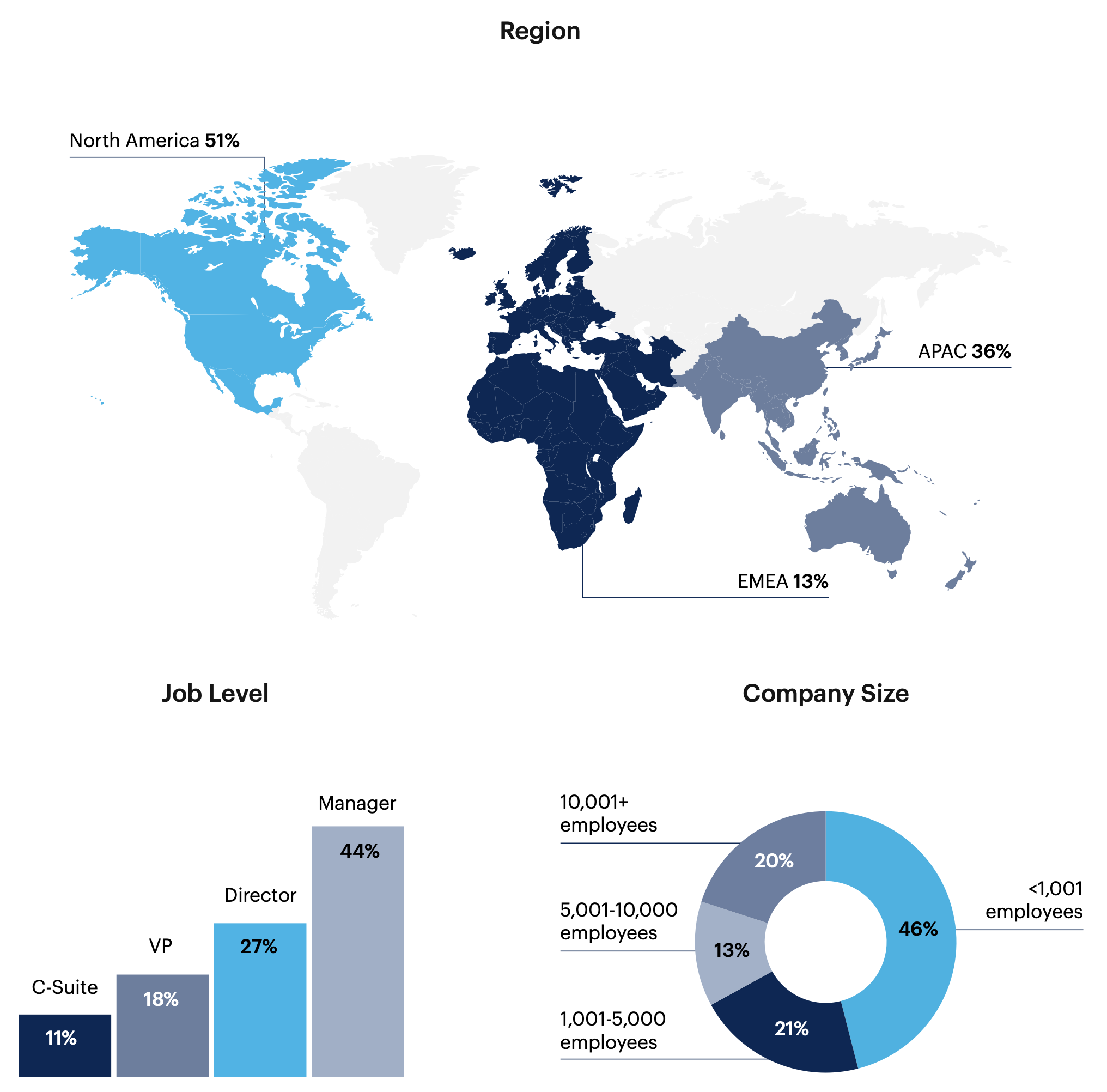Single Sign-On (SSO): Advantages and Disadvantages
Single sign-on (SSO) can improve both security and end-user experience by simplifying the login process. Have organizations realized these benefits, or do access challenges persist?
One minute insights:
 Every respondent is using SSO and nearly all have opted for external solutions
Every respondent is using SSO and nearly all have opted for external solutions Cybersecurity track record, costs and company reputation are key factors for leaders considering SSO vendors
Cybersecurity track record, costs and company reputation are key factors for leaders considering SSO vendors Organizations adopt SSO to improve access management and address poor end-user password practices
Organizations adopt SSO to improve access management and address poor end-user password practices Organizations require fewer access tools and see fewer IT support tickets by using SSO
Organizations require fewer access tools and see fewer IT support tickets by using SSO Integration issues are common and many have found that having SSO alone is not enough
Integration issues are common and many have found that having SSO alone is not enough
All respondents use SSO but proprietary solutions are uncommon as most use external tools
Is your organization currently using a single sign-on (SSO) solution?

Every leader is using an SSO solution at their organization.
No, but we are planning to 0%, No, but it’s been discussed 0%, No, but I think we should 0%, Not sure 0%
n = 300
Which tool are you using for SSO?*
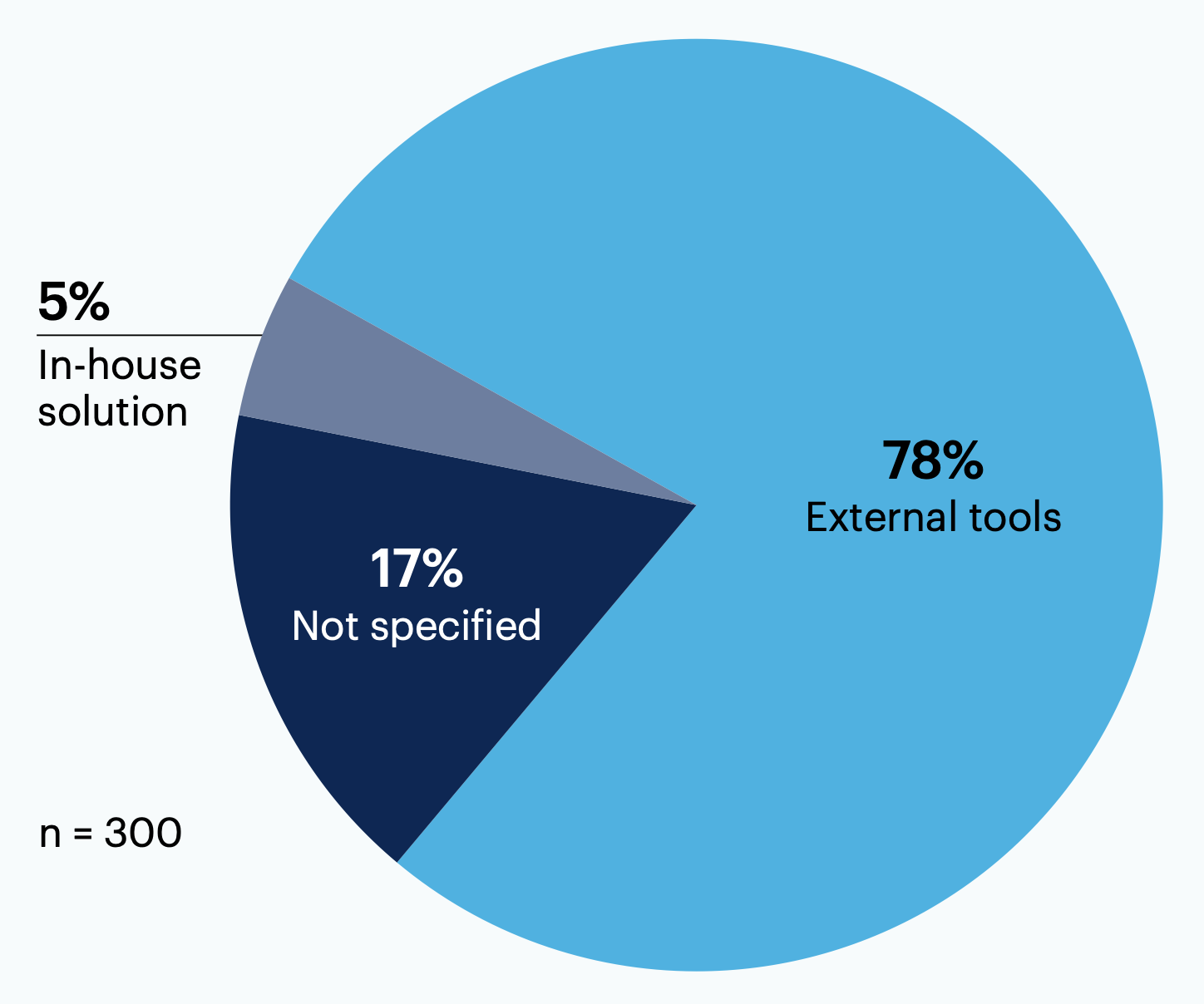
The vast majority (78%) of organizations are using external tools for SSO, with only 5% using an internally developed solution.
*The values for this chart were calculated by categorizing and consolidating open-text responses to this question
Breakdown of vendors specifed by respondents:
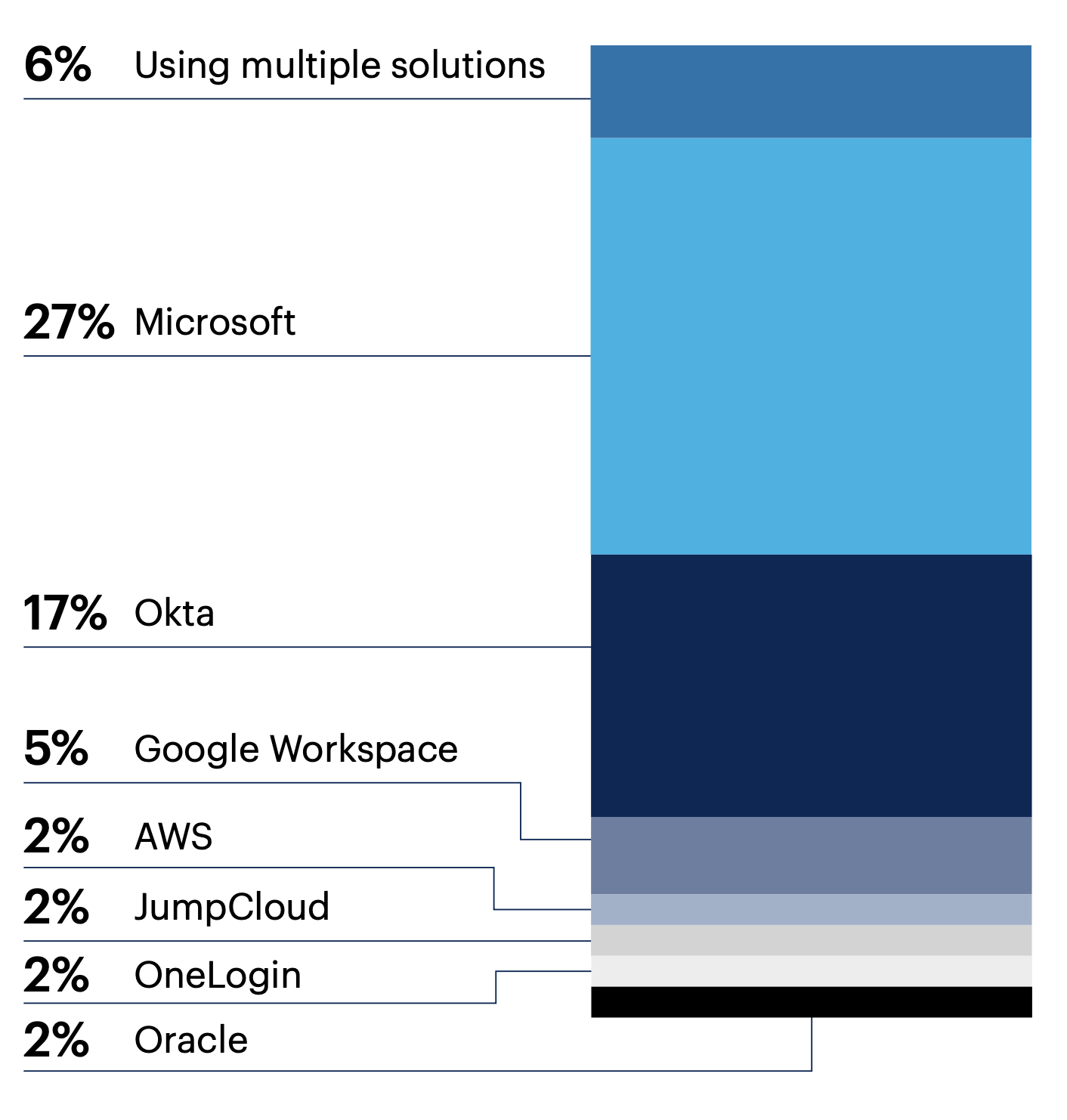
For those using external solutions, the most commonly used vendors are Microsoft (27%), Okta (17%) and Google (5%). 6% are using multiple solutions.
n = 300
An identity management program is table stakes for a modern IT organization.
SSO integration capabilities are the most important requirement for any IDM product. API integration capabilities are the game changers for product selection.
A vendor’s cybersecurity track record and reputation are key factors when leaders consider SSO solutions
Nearly all respondents (88%) are satisfied with their deployment of SSO.
Are you satisfied with your SSO deployment?
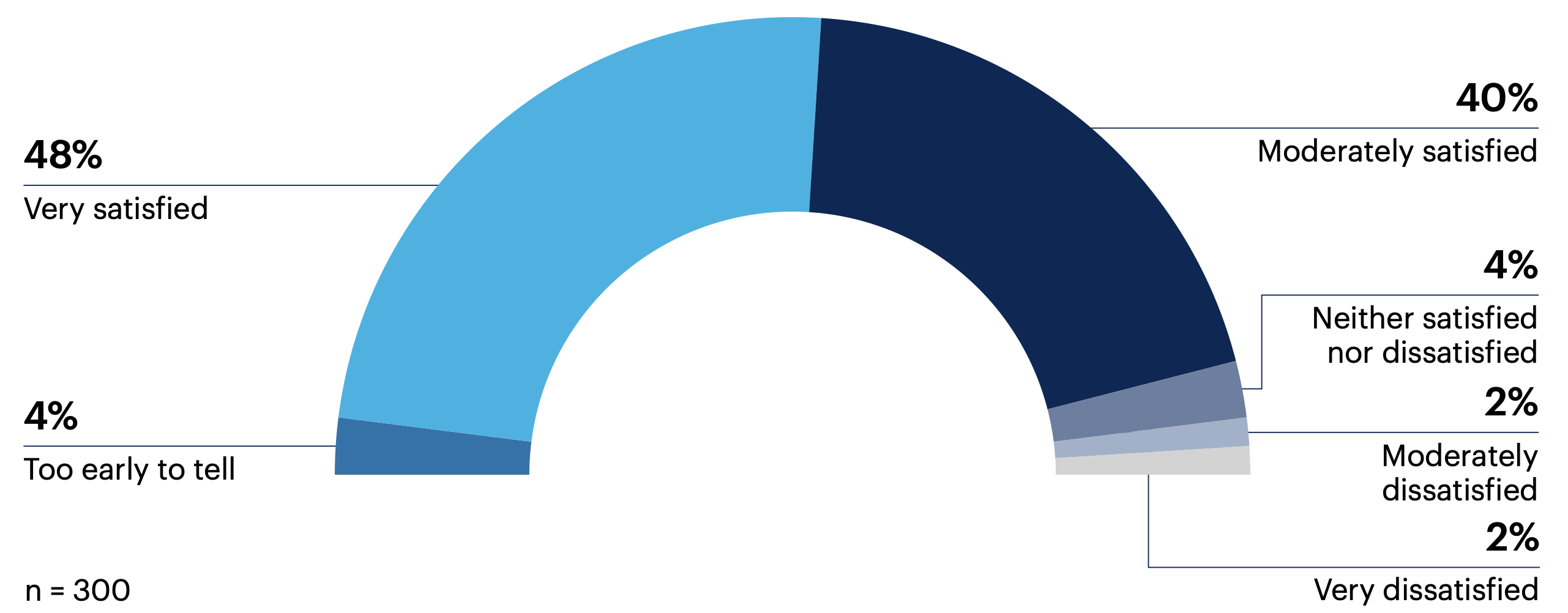
For most leaders (60%), a company’s cybersecurity track record is the most important consideration when deciding on SSO vendors. Likewise, many also cite costs (45%) and company reputation (44%) as key determining factors.
What factors are most important to you when considering SSO vendors?
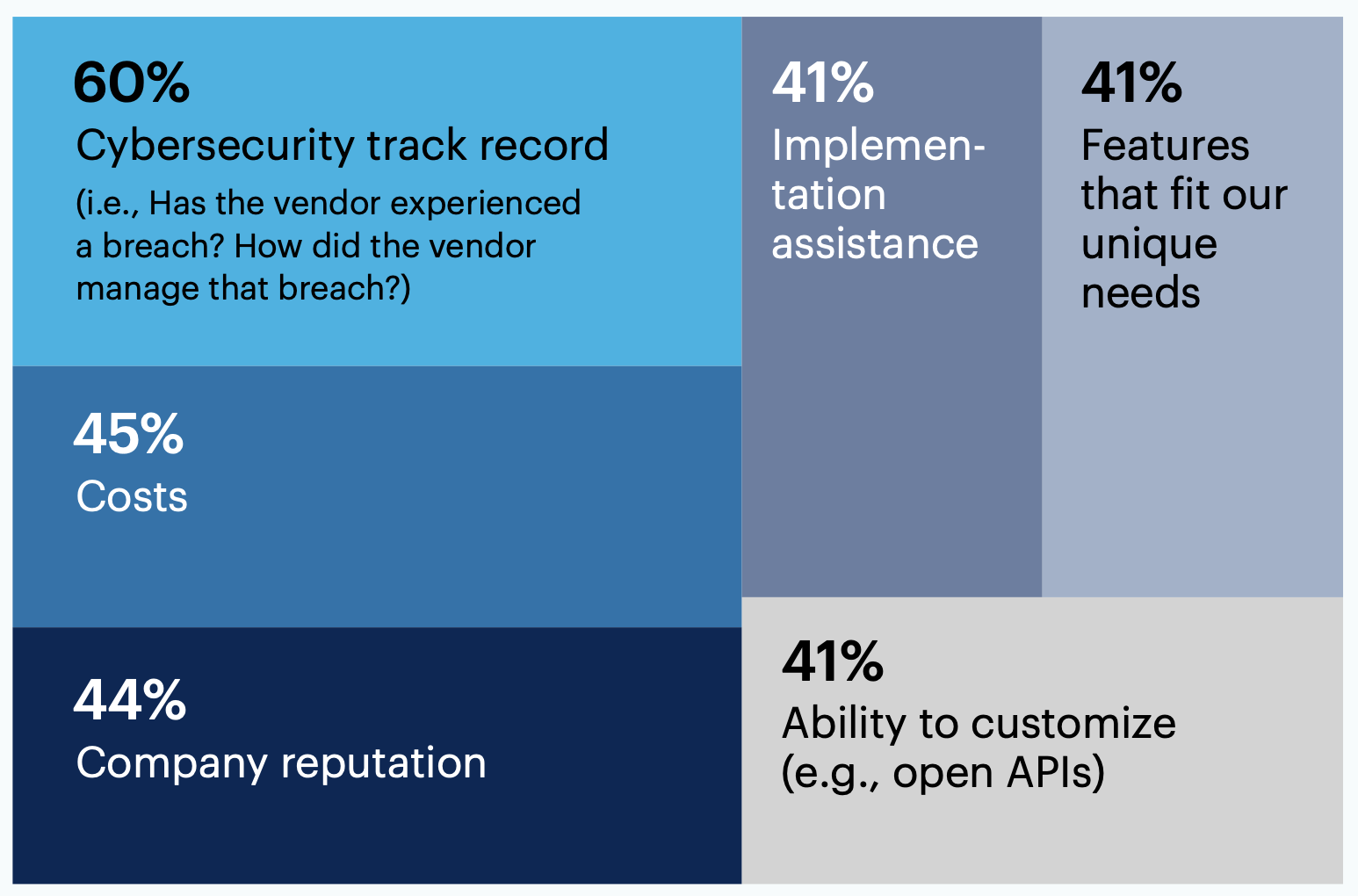
Ongoing management assistance 25%, Peer recommendation 17%, None of these 1%, Other 1%
n = 300
64% chose to adopt SSO to improve access management, and over half of leaders did so to solve poor end-user password practices (56%), reduce support requests (55%) and improve end-user experience (55%).
What are the reasons your organization decided to adopt SSO?
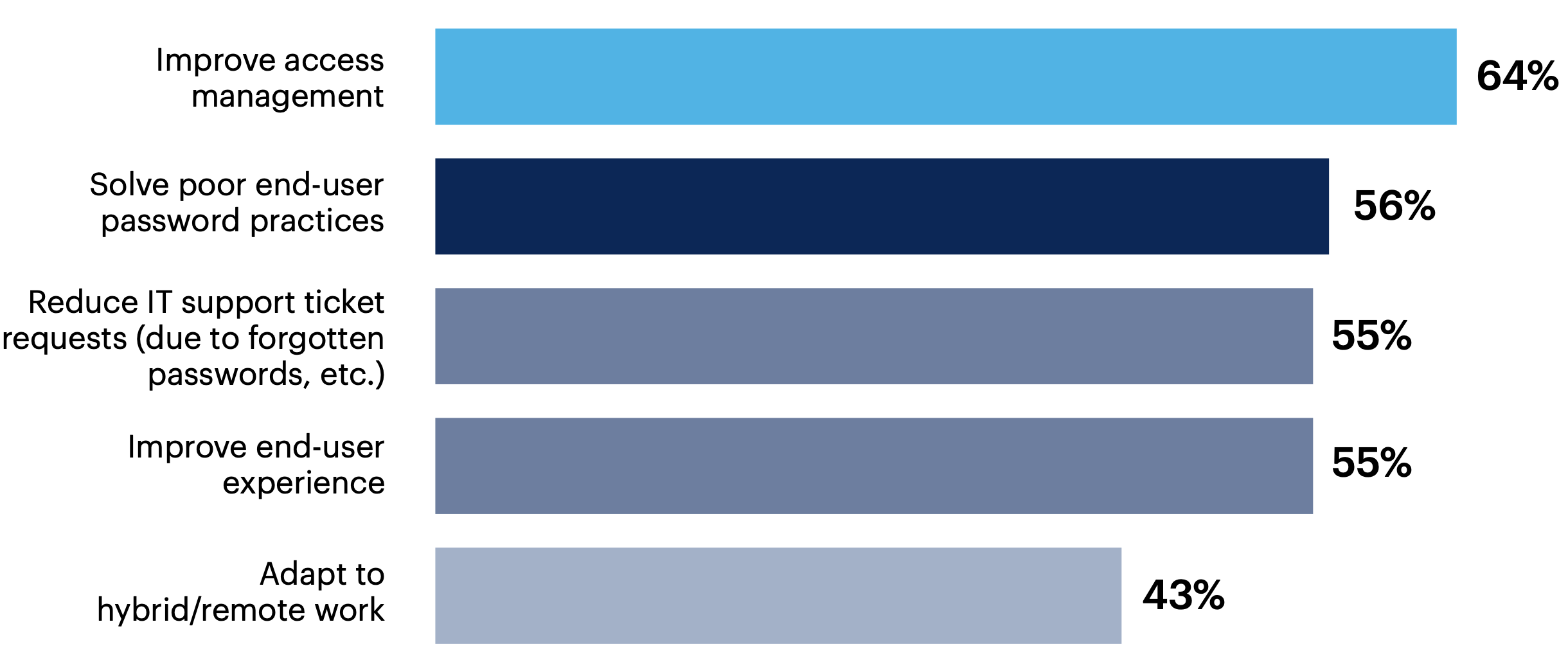
Reduce number of access management tools in use (i.e., needed to streamline) 39%, Reduce costs 17%, None of these 2%, Other 0%
n = 300
It is important to realize that even with SSO, there will be ongoing costs of implementation (new systems) or changes. Also, fine-tuning things like MFA, session durations and expiration, etc., takes time but is necessary to ensure good user experience.
SSO can be helpful, in theory. However, cross-platform/application compatibility, along with single-point-of-failure issues, have caused problems. This methodology is still in its early years and has a lot of room for growth.
SSO is [a] must-have for better end-user experience. SSO must be simplified so that it can integrate with most of the applications and must be highly scalable.
SSO improves end-user experience and reduces IT support tickets, but may be insufficient on its own
Improved end-user experience (70%) is the most reported benefit of SSO adoption, followed closely by needing fewer access management tools (64%) and a reduction in IT support tickets (61%).
What benefits have you experienced with SSO in your organization?
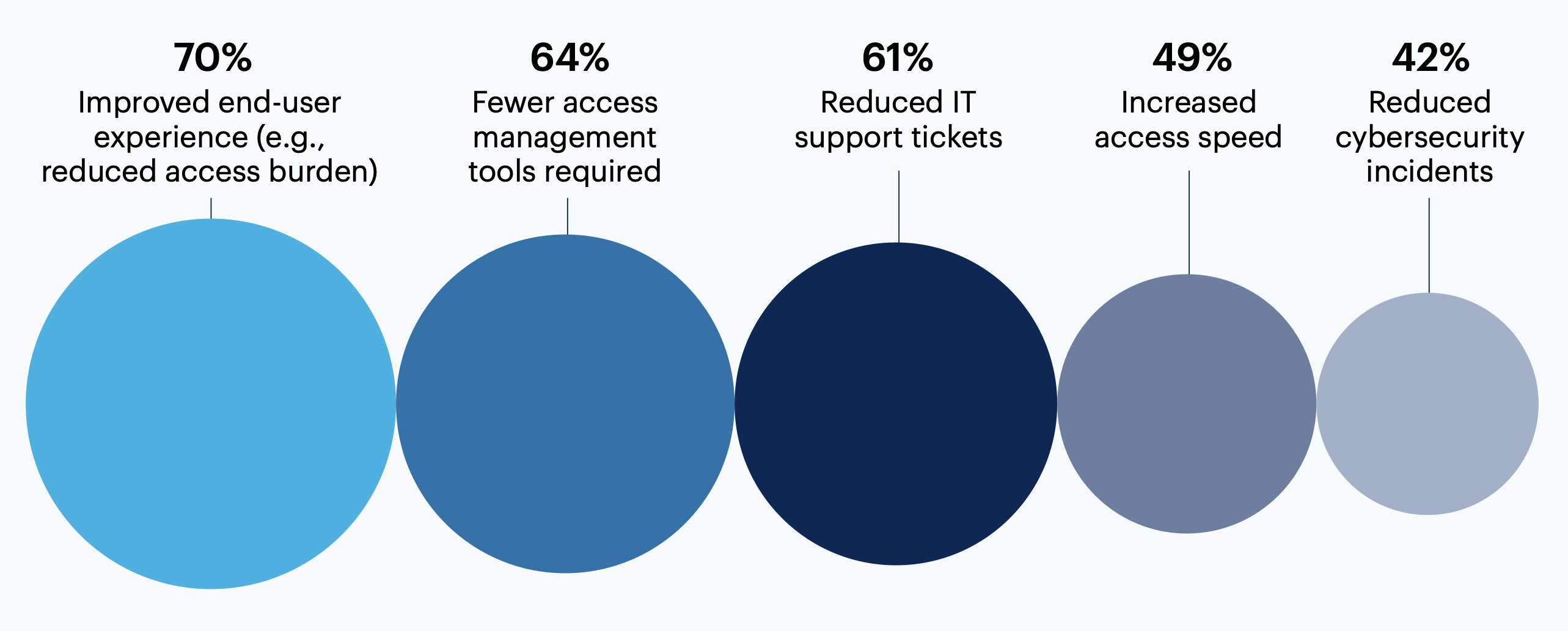
Reduced overall cybersecurity costs 21%, Enabled more composable infrastructure 20%, None of these 1%, Other 0%
n = 300
But more than half (52%) have found that SSO alone is insufficient, and many face difficulties with integration (45%) and device sharing (36%).
What challenges have you experienced with SSO within your organization?
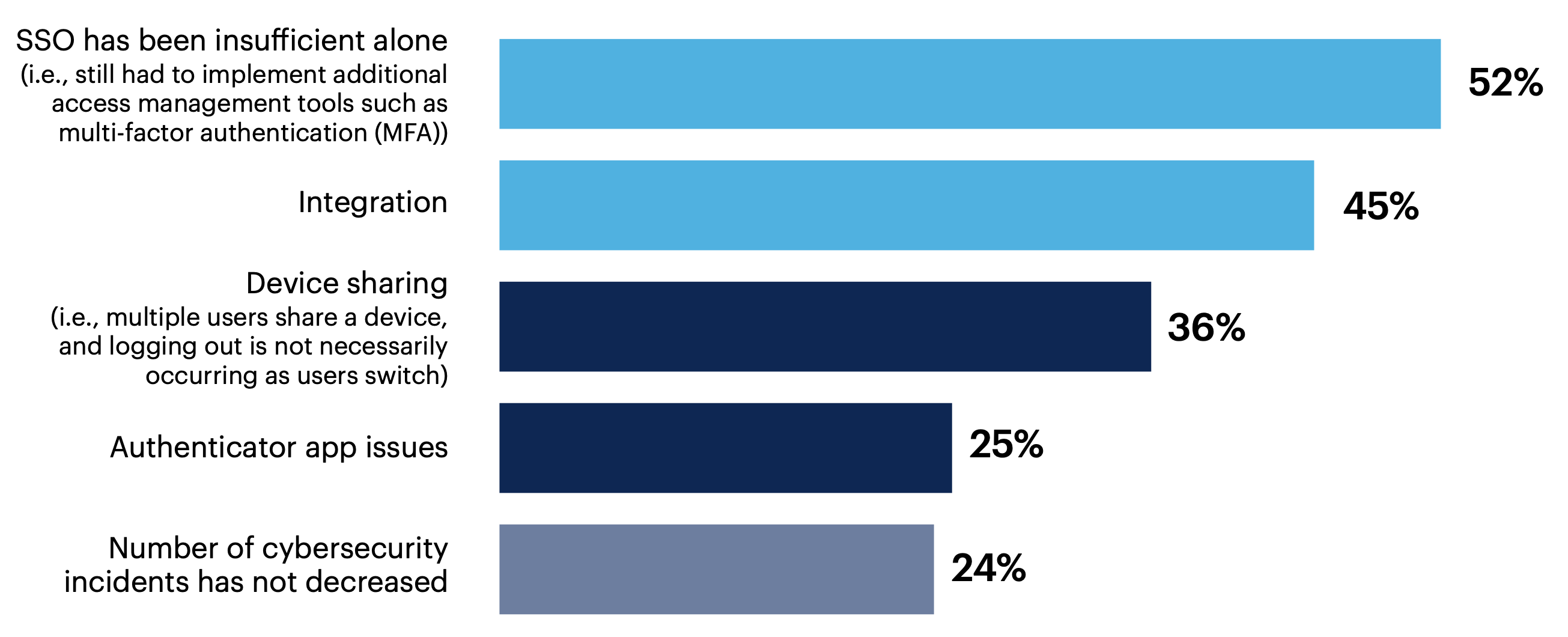
Vendor support 16%, Costs 15%, Hard to define ROI 14%, End-user resistance 13%, Vendor has experienced a cybersecurity breach 10%, Vendor service outages 9%, None of these 7%, Other 1%
n = 300
Nowadays we need more than SSO to secure our environment.
SSO will require further evolution with the advancement of Zero Trust.
SSO integration continues to be a challenge for legacy apps; [delivering] comprehensive SSO for external customers is also challenging across multi-tenant situations.

Want more insights like this from leaders like yourself?
Click here to explore the revamped, retooled and reimagined Gartner Peer Community. You'll get access to synthesized insights and engaging discussions from a community of your peers.
Respondent Breakdown
